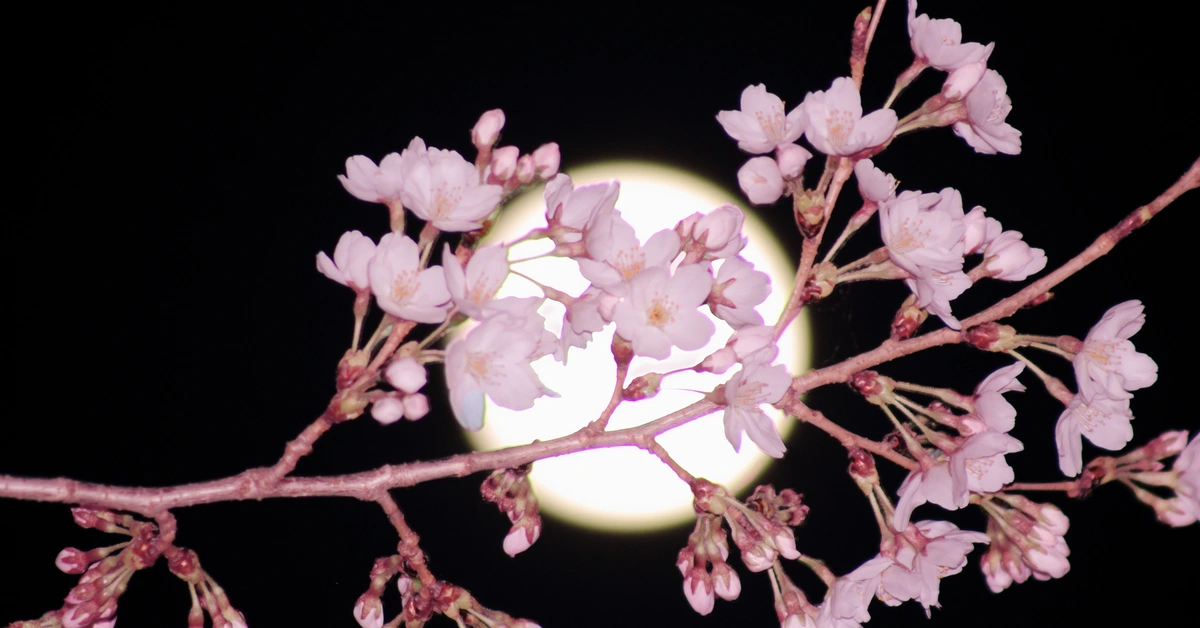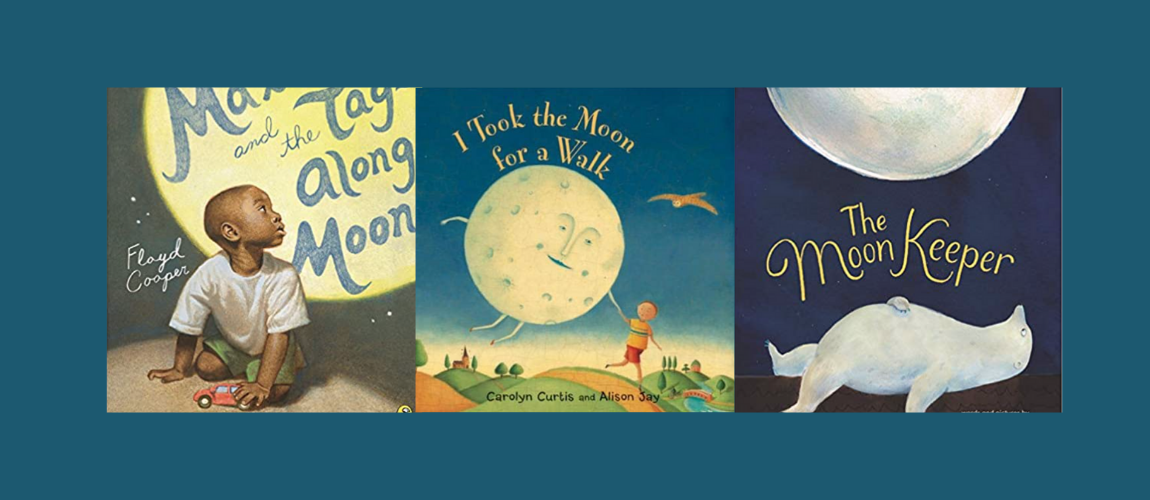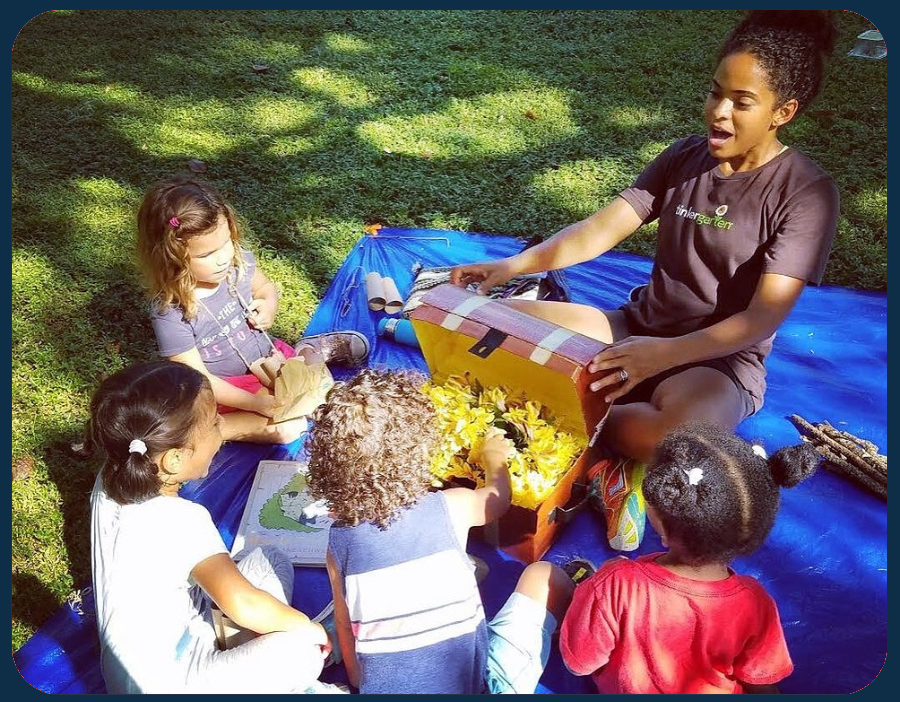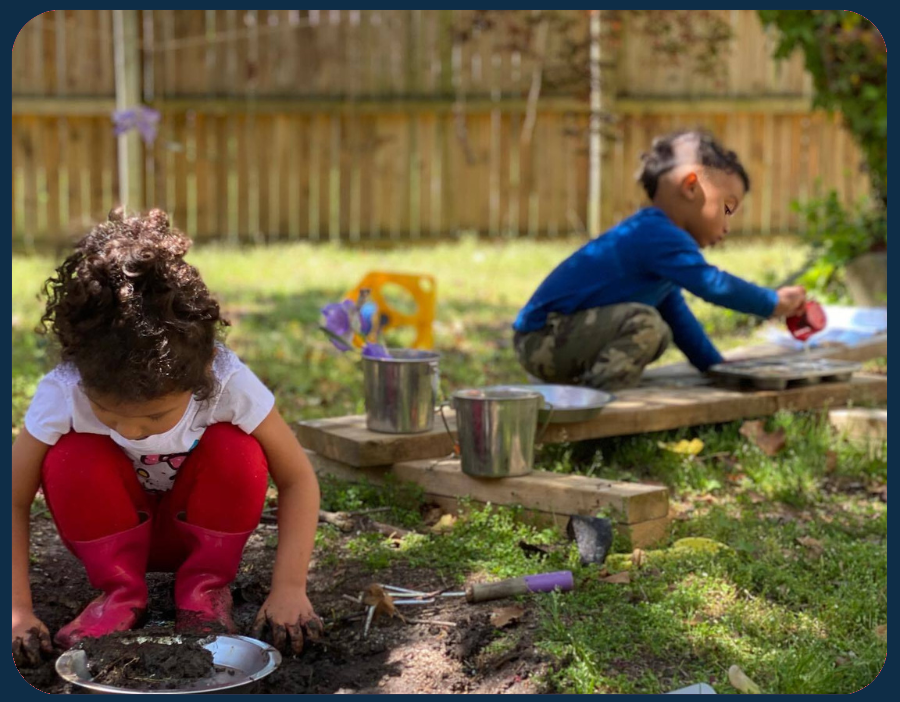Whenever the moon is full, it’s a monthly invitation to slow down, look up and really connect the wonder of that glowing rock in space with the changes we see in the world around us. Kids love to see the moon at its fullest (especially if it means staying up a little later than usual), and the moon packs a lot of lessons about our world.
If you follow along with our free monthly outdoor activity calendars, you know that celebrating the moon is something we do every month. According to space.com, the fifth full moon of 2024 peaks at 9:53am ET on Thursday, May 23rd and the best time for viewing is just as it rises over the horizon—it will appear full on both Wednesday and Thursday evening!
Read on for more about how to enjoy this special May full moon.
1: The Late-Spring Full Flower Moon
The most commonly used names for each monthly moon in North America were learned from the people Indigenous to the land. Many tribes tracked time and days by the cycle of the moon, and the names for each full moon were based on observations, and a reverence, for the changes seen in the shifting seasons.
Inspired by the Algonquin and Ojibwe peoples, a common name for this moon cycle is the Flower Moon — celebrating the abundance of flowers this time of year in much of North America. This full moon is also known as the Bright Moon in Celtic tradition, and for our friends in parts of the southern hemisphere, it's known as the Frost Moon. There are so many names and celebrations for each full moon and I like this list for the range of cultures, names, and folklore it includes.
This year, the full Flower Moon falls during the same week as World Bee Day (Monday, 5/20) and World Turtle Day (Wednesday, 5/23), and we can't think of a better way to help kids make connections between the moon, the natural world, and the changes we see around us!
10 Ways to Celebrate the Full Moon and The Late Spring Around Us
Take advantage of all the learning opportunities the moon has to offer with these 10 great ways to celebrate the moon with kids:
1: See the Full Moon Rise
The Old Farmer’s Almanac lists the dates and time for the full Pink Flower as Thursday, May 23rd. The best time to view will be when it appears full just after sunset on Wednesday or Thursday evening.
2: Catch the Moon During the Day
If the moonrise proves hard to catch, make it a habit to wait a few days and try to catch a glimpse of the still-big moon in daylight. For little kids, this may be the best way to see the moon! This link helps determine moonrise in your ZIP code.
3: Explore the Connection to Nature
The full moon invites us to slow down and reflect on the changes we see in our world. Celebrate the full Flower Moon and explore this moment together with these simple ideas:
- Celebrate the Beauty of Spring Flowers
-
Creating with Flowers: The artist Frida Kahlo is known for her vibrant paintings featuring lush flora and her celebration of indigenous culture. Gather flowers and invite kids to make Frida-inspired art!
- Enjoy Books about Flowers: Check out this read aloud of Plant the Tiny Seed by Christie Mathson, a Tinkergarten favorite! You can even plant your own seeds and watch them grow — a wonderful lesson in patience and persistence.
-
- Make Connections to World Bee Day
- Save the Dandelions: Bees play an important role in our ecosystem, pollinating the late-spring flowers we celebrate this month—making more plants, seeds, fruits, and foods that many creatures, including humans, depend on. Make dandelion inspired art to help kids remind themselves and others of how important dandelions are to our friends the bees.
- Playing Like Pollinators: Help kids learn about hard working bees (and build empathy!) by pretending to be a bee pollinating flowers and collecting nectar for their colony.
- Save the Dandelions: Bees play an important role in our ecosystem, pollinating the late-spring flowers we celebrate this month—making more plants, seeds, fruits, and foods that many creatures, including humans, depend on. Make dandelion inspired art to help kids remind themselves and others of how important dandelions are to our friends the bees.
- Celebrate World Turtle Day and the Moon's Role
- Learn About the Importance of the Moon to Sea Turtles: New sea turtle hatchlings make their way to the ocean by following the light of the moon. Check out this lovely recorded read-aloud of I'll Follow the Moon from author Stephanie Lisa Tara.
- Create a Turtle Water Park: Learn about turtles and get creative as you make a place to for "turtle" to play.
- Learn About the Importance of the Moon to Sea Turtles: New sea turtle hatchlings make their way to the ocean by following the light of the moon. Check out this lovely recorded read-aloud of I'll Follow the Moon from author Stephanie Lisa Tara.
-
Continue Observing the Flower Moon: Check out our May Calendar for more ways to fill the rest of May with outdoor play as the Flower Moon begins to wane and appear smaller each day for the rest of the month. Marvel with kids as it grows smaller and look forward with excitement to the new Strawberry Moon cycle that begins on June 6th—this year, the full Strawberry Moon will rise on June 21st, 2024!
4: Get Inspired
During the 2020 Worm Moon, I had the pleasure of talking with Nicolette Sowder, creator of Wilder Child and the Kids’ Moon Club and marvelous human, as part of our weekly Tinker Talk series. Enjoy Nicolette’s moon-loving wisdom in this video!
5: Let Something Go
While a new moon is a great time to start fresh or kick off something new, the full moon can serve as a reminder to let go of something that is burdening you or to take an idea or practice you've wanted to start and give it a go. We're one month into spring—a great time to begin planting and tending to new seeds. Gardeners and farmers have been following the moon cycle for thousands of years, knowing that the moon's pull helps water in the soil better reach new seeds and seedlings during a full moon—amazing!
6: Take Notice of the Cycle
Make a habit to check in on the moon throughout the next month. Notice how it changes, when it’s in the sky during the daylight and what shape it takes at night. Our free monthly activity calendars include an image of which phase the moon is in each day to help you keep track. You can also think of it as simply welcoming the moon into your life in a more meaningful way. Nicolette advises, "When you are first greeting the cycle and getting comfortable with it, just do the welcoming and the emotive piece and root yourself inside of the cycle—don't feel like you need to rush into any activities.” We've started with simply making time for the moon and trying to notice it.
7: Discover How the Moon Organizes Life
It never really crossed my mind that the word month comes from words for “moon.” The very way we mark time and organize our lives comes from the moon and its cycles. In a way, we’re all already moving with the moon!
Many of us know that the moon’s gravitational pull is what drives the ocean tides, but it’s still pretty mind-blowing.
8: Learn Some Cool Moon Facts!
- There is a new full moon every 27 days or so, and it happens when the Earth is positioned almost right between the sun and the moon. That’s why the moon is fully illuminated (Earth rarely gets exactly between the two. When it does, it’s a lunar eclipse). Because the moon is aligned with the sun, a full moon rises right around sunset, shines all night long, and then "sets" when the sun rises again the next morning.
- Did you know the moon is a quarter the size of the earth? And that on its surface are seas filled with hardened lava?
- The moon doesn’t produce its own light; what we see is the sun reflected off of it.
- The moon is not actually a perfect sphere. Instead, it's shaped like an egg. When we look up at the moon from Earth, one of the small ends is pointing right at us, so it appears round to us.
- At roughly one-fourth the diameter of Earth, some scientists think the moon is more like a planet. They refer to the Earth-moon together as a "double planet."
- For more facts, visit National Geographic Kids or, for some real-time data and cool images, check out Nasa’s moon landing page.
9: Take the Moon for a Walk
It’s a Tinkergarten DIY activity, a beloved book and a super fun way to help kids notice how the moon follows us wherever we go! Try our activity; it’s both thrilling and calming under any moon, at any age.
10: Read Books about the Moon
Our team has compiled a list of our 13 favorite moon books. Read some of these to spark curiosity and tune even more into the magic of the moon!






